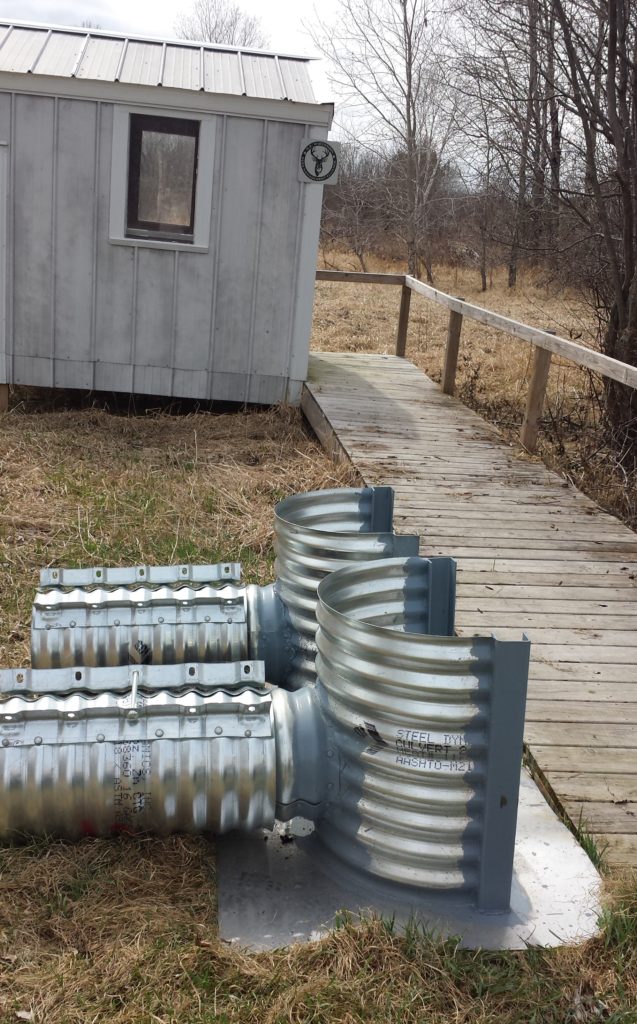Project: Multiple
County: Multiple
By Peter Ziegler, WWA Project Director
I dropped off two water control structures at our Abrams site early in May to help alleviate the flooding issue we had been having due to plugged culverts. They will be installed once the water drops as it has been too high for the very reason we are installing them.
This area was redone a few years ago to provide access for Northern Pike spawning habitat, but the grates on the culverts continually plugged, raising the water and causing erosion issues for the trail and putting the nesting islands under water. After consulting with WDNR fisheries staff we cooperatively came up with a design that will prevent carp from accessing the wetland, but will still allow native fish access and should not plug so readily. The added benefit is if it does plug, it will be very simple to pull the grate, clean it on dry land and drop it back into place.
Wetlands go well beyond waterfowl. They play a key role in so many aspects of our daily lives and those of wildlife as well. This is another example of how interrelated our natural world is. It is not the first time I have worked with fisheries on wetland restoration projects. WWA tries to incorporate aspects to our wetland projects for all species which might benefit from a restored wetland. I have worked to provide access for Walleye spawning as well as designing stream corridors and floodplain wetlands specifically for Northern Pike and other native fish species as part of wetland restorations.
Not being narrowly focused on just waterfowl but instead on all wildlife which can benefit from a restored wetland is very important, and it is something we and all members of WWA should be proud of. You might be surprised by just how many of our wetland projects include a component to benefit fish within the final design. So far there has always been a way to design an activity to benefit other species without negatively impacting the overall goals of the restoration.

